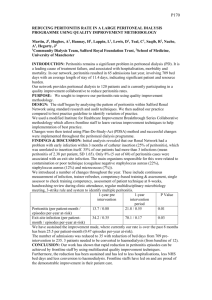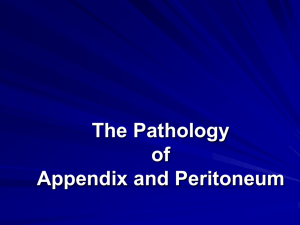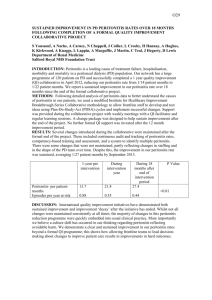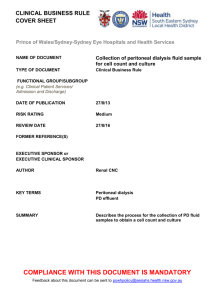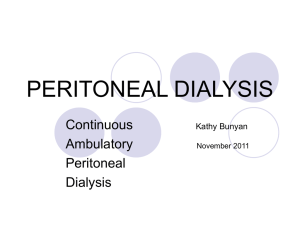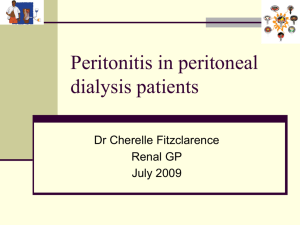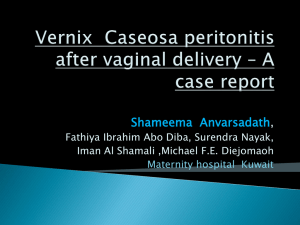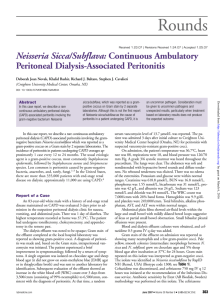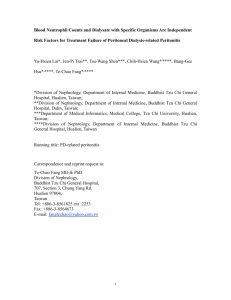P135 Diagnostic and prognostic role of peritoneal CA 125 in
advertisement
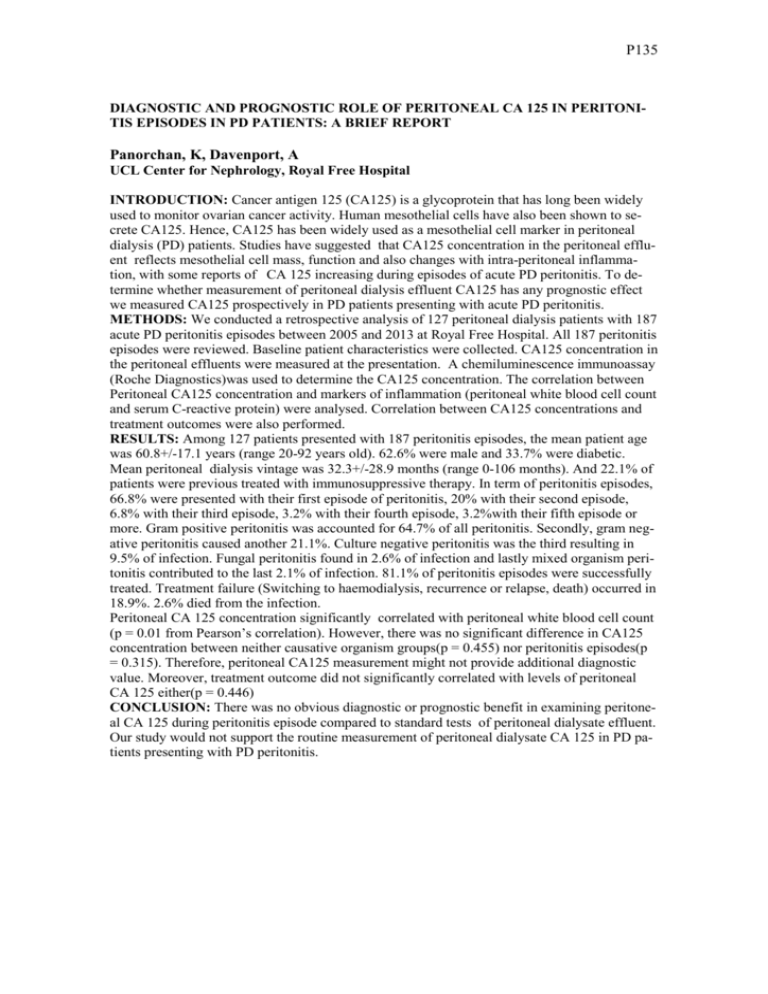
P135 DIAGNOSTIC AND PROGNOSTIC ROLE OF PERITONEAL CA 125 IN PERITONITIS EPISODES IN PD PATIENTS: A BRIEF REPORT Panorchan, K, Davenport, A UCL Center for Nephrology, Royal Free Hospital INTRODUCTION: Cancer antigen 125 (CA125) is a glycoprotein that has long been widely used to monitor ovarian cancer activity. Human mesothelial cells have also been shown to secrete CA125. Hence, CA125 has been widely used as a mesothelial cell marker in peritoneal dialysis (PD) patients. Studies have suggested that CA125 concentration in the peritoneal effluent reflects mesothelial cell mass, function and also changes with intra-peritoneal inflammation, with some reports of CA 125 increasing during episodes of acute PD peritonitis. To determine whether measurement of peritoneal dialysis effluent CA125 has any prognostic effect we measured CA125 prospectively in PD patients presenting with acute PD peritonitis. METHODS: We conducted a retrospective analysis of 127 peritoneal dialysis patients with 187 acute PD peritonitis episodes between 2005 and 2013 at Royal Free Hospital. All 187 peritonitis episodes were reviewed. Baseline patient characteristics were collected. CA125 concentration in the peritoneal effluents were measured at the presentation. A chemiluminescence immunoassay (Roche Diagnostics)was used to determine the CA125 concentration. The correlation between Peritoneal CA125 concentration and markers of inflammation (peritoneal white blood cell count and serum C-reactive protein) were analysed. Correlation between CA125 concentrations and treatment outcomes were also performed. RESULTS: Among 127 patients presented with 187 peritonitis episodes, the mean patient age was 60.8+/-17.1 years (range 20-92 years old). 62.6% were male and 33.7% were diabetic. Mean peritoneal dialysis vintage was 32.3+/-28.9 months (range 0-106 months). And 22.1% of patients were previous treated with immunosuppressive therapy. In term of peritonitis episodes, 66.8% were presented with their first episode of peritonitis, 20% with their second episode, 6.8% with their third episode, 3.2% with their fourth episode, 3.2%with their fifth episode or more. Gram positive peritonitis was accounted for 64.7% of all peritonitis. Secondly, gram negative peritonitis caused another 21.1%. Culture negative peritonitis was the third resulting in 9.5% of infection. Fungal peritonitis found in 2.6% of infection and lastly mixed organism peritonitis contributed to the last 2.1% of infection. 81.1% of peritonitis episodes were successfully treated. Treatment failure (Switching to haemodialysis, recurrence or relapse, death) occurred in 18.9%. 2.6% died from the infection. Peritoneal CA 125 concentration significantly correlated with peritoneal white blood cell count (p = 0.01 from Pearson’s correlation). However, there was no significant difference in CA125 concentration between neither causative organism groups(p = 0.455) nor peritonitis episodes(p = 0.315). Therefore, peritoneal CA125 measurement might not provide additional diagnostic value. Moreover, treatment outcome did not significantly correlated with levels of peritoneal CA 125 either(p = 0.446) CONCLUSION: There was no obvious diagnostic or prognostic benefit in examining peritoneal CA 125 during peritonitis episode compared to standard tests of peritoneal dialysate effluent. Our study would not support the routine measurement of peritoneal dialysate CA 125 in PD patients presenting with PD peritonitis.
